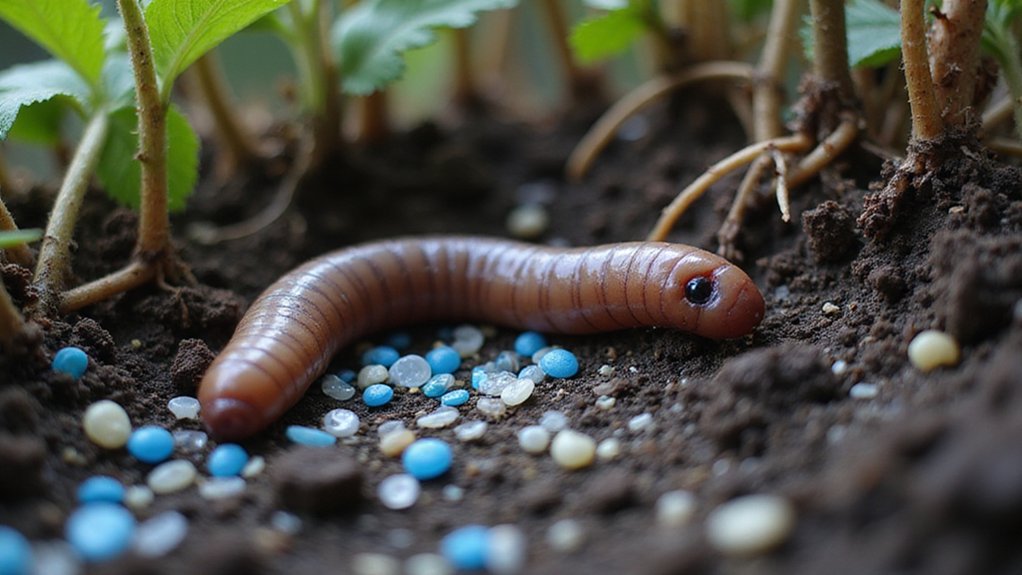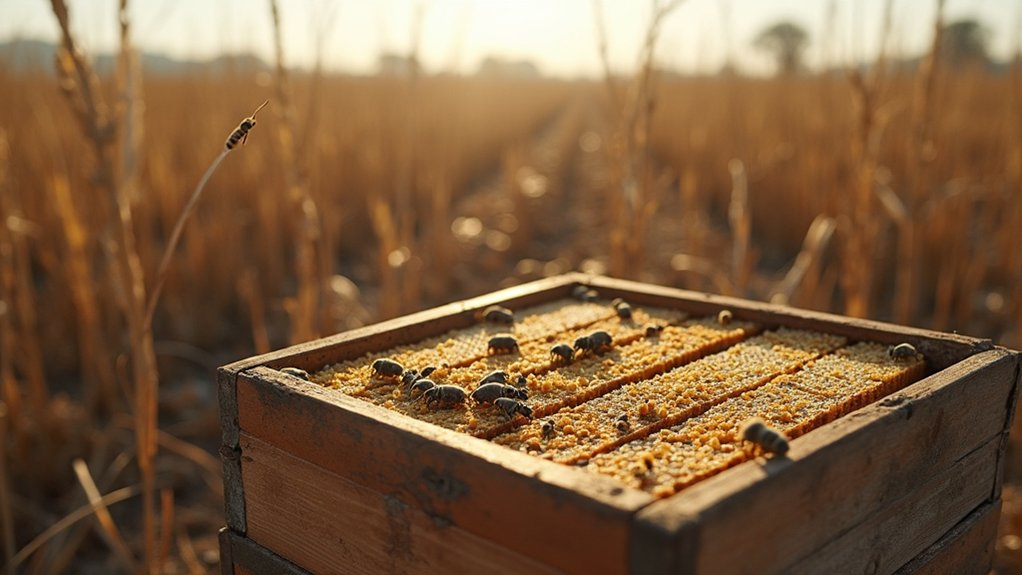When scientists started digging into soil contamination, they found something disturbing: tiny plastic particles are literally killing earthworms. These microscopic invaders – polyethylene from shopping bags, polystyrene from takeout containers, even acrylic fibers from your favorite sweater – are turning soil into a toxic wasteland for the creatures that keep it healthy.
Microsc
The numbers are brutal. Just 0.1% microplastic content in soil starts messing with earthworm growth. At 1 gram per kilogram, growth inhibition becomes significant. Pump it up to 20 grams per kilogram of polyethylene, and half the Eisenia fetida population dies within three weeks. That’s not a typo. Half dead.
But death might be merciful compared to what these worms endure. Oxidative stress ravages their systems. Their tissues show histopathological damage – fancy word for “their insides are getting shredded.” Neural damage. DNA damage. The plastic particles act like tiny sponges, soaking up heavy metals and organic pollutants, then delivering this toxic cocktail straight into earthworm bodies.
Growth? Forget about it. Aporrectodea rosea dropped 3.1% of body weight after just 30 days of exposure to high-density polyethylene. The same stuff in your milk jug. Reproduction rates tank even faster than mortality rates, which is saying something. These worms can’t make babies when they’re loaded with plastic. Great news for soil ecosystems, right?
Here’s where it gets really fun. Earthworms aren’t just random dirt dwellers – they’re ecosystem engineers. They process organic matter, create nutrient-rich castings, maintain soil structure. Their burrowing activity alone accounts for 6.45% of cereals and 2.3% of legumes in global food production. When microplastics compromise their digestive enzymes and reduce cast production, soil quality nosedives. The decomposition processes that feed plants slow down. The soil becomes less fertile, less productive. Scientists analyzing 77 research papers discovered soil receives 4-23 times more plastic contamination annually than oceans, making this crisis far worse than marine pollution.
Commercial glitter affects them too, because apparently we needed to make soil sparkly while poisoning it. Low-density polyethylene causes 25% mortality in Lumbricus terrestris after 60 days. Polylactic acid, polyvinyl chloride, nylon fibers – pick your poison.
The worms are dying. The soil is degrading. And those vegetables in your garden? They’re growing in compromised earth, maintained by poisoned engineers. Sleep tight.
References
- https://www.frontiersin.org/journals/environmental-science/articles/10.3389/fenvs.2023.1126847/full
- https://www.cabidigitallibrary.org/doi/10.1079/cabireviews.2024.0037
- https://www.mdpi.com/2077-0472/14/2/267
- https://www.sciencedaily.com/releases/2019/09/190911193303.htm
- https://www.sustainability-times.com/research/earth-is-being-poisoned-from-below-microplastics-found-in-earthworms-threaten-crops-food-chains-and-human-survival/








